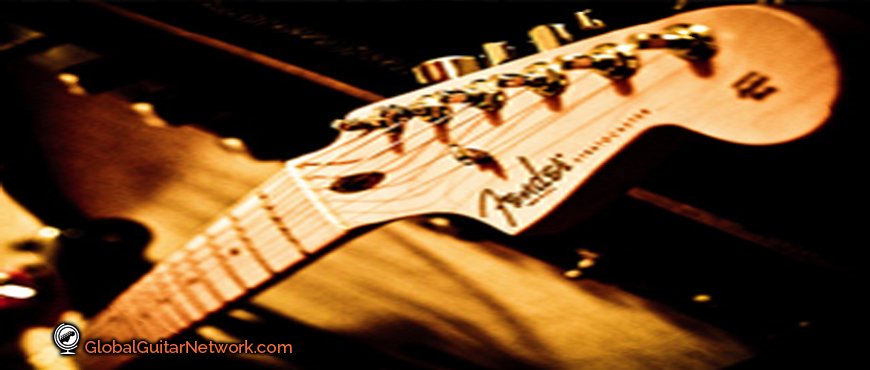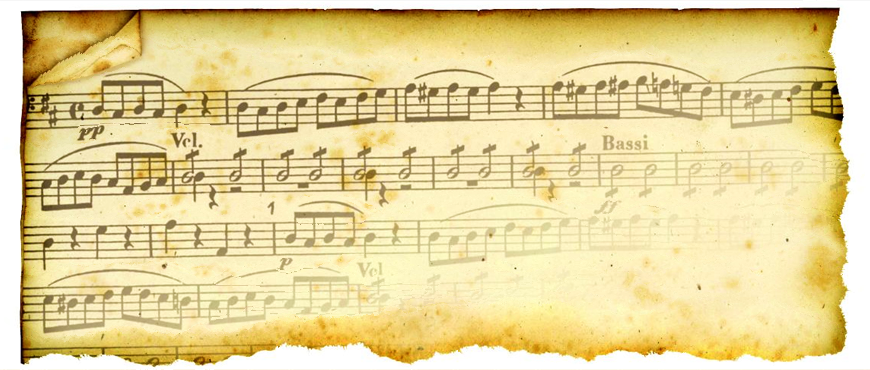
Find Any Note On The Neck in Seconds
June 4, 2014
5 Tips to Help You Improvise
June 4, 20148 Ways to Start Playing By Ear Today

After college I spent 10 years teaching private guitar lessons. Nearly all of the lessons I gave involved me learning a song by ear and writing it down in tabs for my student. I literally learned thousands of tunes in that time (I wish I could remember all of them).
At first it was difficult, but the added pressure of the student sitting there staring and expecting me to get it right were great motivators. Over time I became very good, and found myself transcribing rather difficult tunes in no time at all.
It helped my playing immensely. Not only was I now able to figure out all of the bits of songs that I liked the sound of but I could more easily transcribe the music that I heard in my head (BONUS!).
So needless to say I’m a big supporter of all things ear training and have always thought that it would be cool to post something about it on here.
Luckily our friend Christopher Sutton is the founder of Easy Ear Training, a company devoted to making it fun and easy to develop your musical ear. Who better to do a guest post on ear training for ScaleTrainer.com
Take it away Chris!
Playing by ear is not a magic “gift” – but a learnable skill.
Have you ever tried playing by ear before? Most musicians have given it a shot, but after finding it didn’t come easily and instantly, most give up. Don’t be so quick to assume you can’t do it!
There are actually some simple strategies you can use to make learning to play by ear easy and enjoyable. And when you start getting the hang of it, playing by ear is one of the most satisfying of all musical activities.
If you’re learning guitar, don’t be intimidated by playing by ear. Start with simple trial-and-error methods, use a bit of dedicated ear training to help you along, and you can quickly progress from mostly making errors, to reliable, note-perfect performance.
Here are 8 ways you can start playing guitar by ear today:
1. Make friends with your mistakes
This is the most powerful tip there is. Most often, what holds guitarists back from playing by ear is fear of making mistakes.
Change your mindset. Instead of treating “wrong” notes as forbidden errors to be embarrassed of, think of them as a natural part of the process. With this mindset you’ll find it much easier to experiment your way to the “right” notes.
At first you’ll get it wrong more often than you get it right. But if you’re practicing in your room, what’s so terrible about that? As you experiment and train your ears, not only will you get quicker at identifying the right notes, but you’ll also start coming up with neat ways to “fix” your musical mistakes, turning a “wrong” note into just an unexpected embellishment.
This ability to transform musical mistakes into creative embellishments is a handy skill for any musician!
2. KISS: Keep It Stupidly Simple
Don’t begin by trying to play killer Yngwie solos by ear and expect to nail them first time.
Start from the absolute most basic exercises in playing by ear. Try using simple isolated notes, intervals or chords. Once you can reliable play those by ear, start connecting these skills to real music.
If you jump straight to trying to play complex music by ear you’ll be frustrated. Start from what you can already play by ear and build out from there. You’ll progress quickly towards the same goal… but have a lot more fun along the way!
3. Practice transcription
Transcription means figuring music out by ear and writing it down somehow. It doesn’t have to be classical music notation. Use software or tab as you work out music by ear.
The process of transcription is actually almost the same as playing by ear – the only difference is it offers you more room for trial-and-error experimentation, and introduces a useful middle step between hearing and playing. Get better at transcription and you’ll get better at playing by ear.
4. Learn your vocabulary

When you learn a new language, you don’t just learn the letters of the alphabet and then jump straight to having a conversation or writing a novel. In between those two stages, you learn the words which make up the language: your vocabulary.
The same is true in music.
You can’t jump straight from knowing individual notes to playing by ear or improvising. You need to build up a vocabulary of riffs, licks and runs which you can recognize by ear and play on your instrument.
The simplest example would be to do interval ear training (e.g. learning the sounds of semitones which correspond to your frets, or fourths and fifths which represent the pitch difference between adjacent strings) but you can also usefully learn 3-note runs and bigger “chunks” of musical vocabulary. Likewise, you can learn to recognize common sequences of chords (like a I-IV-V progression, or the classic jazzy ii-V-I) which crop up in all kinds of music.
This vocabulary then acts as shortcuts and building blocks for quickly working out music by ear.
5. Practice transposing
Take a song you already know how to play, and try playing it in a different key. It helps to have some understanding of the underlying music theory for keys, scales and chord progressions – but don’t treat transposing as an abstract exercise in music theory!
Instead, use your ears.
Choose a different starting note or first chord, and then try re-constructing the song from that starting point instead. Because the song is familiar you should find you can use trial-and-error to gradually work it out by ear.
As you do this across multiple keys and with different songs, you’ll find it gets easier and easier as you pick up little tricks, learn to recognize the underlying patterns, and train your ear to distinguish right from wrong.
6. Work it out again
When you try to play a song you once learned and you find you can’t quite remember it, don’t just look up the tab or sheet music. Instead, challenge yourself to work it out again using only your ears and your instrument.
You already remember parts of how to play it, and your ears remember how it should sound, so this can be a great way to give yourself a helping hand in playing by ear.
Treat every forgotten song as an opportunity to hone your play-by-ear skills!
7. Trade licks with a friend
This is one of the most fun ways to practice playing by ear!
Find a guitar-playing friend who also wants to learn to play by ear and spend some time trading licks back and forth.
Start off simple: agree on a scale or at least a starting note, and then take turns to improvise a riff for the other one to figure out by ear. Keep them short at first (just a few notes) and resist the temptation to show off or make them overly complex.
As you both get better at working out riffs by ear you can make them longer, vary the starting note, and add embellishments like hammer-ons and pull-offs or string bends.
You’ll quickly find your skills improving and it’s a small step to then do the same thing with recorded music you want to play by ear.
8. Get the blues
Whether you’re a blues fan or not, it’s simply a great genre for practicing playing by ear. Improvised solos are expected, and there’s normally a known 8 or 12-bar chord progression that everything’s based on. That means you have a clear framework for working out the notes to play and you get the opportunity to experiment with playing by ear.
Many guitar players will experiment with blues playing, but rely on fretboard patterns to know which notes they can play. Break free of this formulaic approach and learn to trust your ears instead.
Start with recordings, trying to recreate the melody by ear, or work out the chords without looking up the key or chord chart. When you start feeling confident, take your skills to a local blues jam and sit in for a song or two.
I hope these 8 ideas will encourage you to start learning to play by ear. I would encourage you to choose just one, and start using it in your guitar practice today. Explore what kinds of things you can already play by ear and then build your skills from there. Relate it to the music you’re already learning and practicing – and enjoy!
 Christopher Sutton is the founder of Easy Ear Training, a company devoted to making it fun and easy to develop your musical ear. He plays Mountain Goats songs on a battered 3/4 size acoustic guitar when he’s in the mood to sing. You can visit the Easy Ear Training website for many more tips and techniques for learning to play by ear.
Christopher Sutton is the founder of Easy Ear Training, a company devoted to making it fun and easy to develop your musical ear. He plays Mountain Goats songs on a battered 3/4 size acoustic guitar when he’s in the mood to sing. You can visit the Easy Ear Training website for many more tips and techniques for learning to play by ear.




